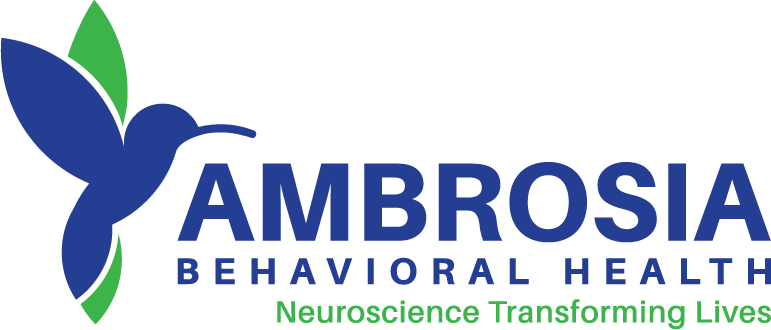Prescription Drug Abuse
When taken as prescribed, prescription medications serve a real medicinal purpose in healing the body and mind. However, prescription drugs can become extremely dangerous when misused or abused.
Despite them being prescribed, someone can endure harmful side effects, or need detox if they become addicted to them. Whether it’s staying on a prescription for longer than necessary or using them recreationally, prescription drug abuse carries serious risks over both the short and long term. And long-term prescription drug abuse can easily lead to physical dependency and addiction.
Prescription drug abuse is the taking of prescription medication in a manner or dose outside of what has been prescribed, like more of the drug than is recommended. Other forms of prescription drug abuse are taking someone else’s prescription medication or taking a prescription medication to feel the “high” of taking it. The term “non-medical use of prescription drugs” also refers to prescription drug abuse.
Of course, most people take prescription medication responsibly and with proper medical supervision. However, prescription drug abuse has increased over the last 20 or so years, especially among teens and young adults. Prescription drug abuse tends to occur across all social, economic, geographic, and ethnic groups.
Prescription drug abuse carries severe medical consequences. Over the past 20 years, prescription drug abuse has resulted in an explosion of visits to hospital emergency rooms. It has also led to deaths by overdose involving prescription drugs, and admissions to detox and drug rehab facilities for prescription drug use addiction. Nationwide drug overdose deaths involving prescription painkillers alone rose from 3,442 in 1999 to more than 16,000 in 2020.

Commonly Abused Prescription Drugs
Examples: pentobarbital sodium (Nembutal), diazepam (Valium), alprazolam (Xanax)
Doctors typically prescribe depressants to treat anxiety and sleep disorders. These medications act by slowing down normal brain function. The effects of taking depressants include feelings of drowsiness and discoordination. Large doses of depressants can hinder breathing, resulting in a coma. Long-term abuse of depressants can lead to physical dependence and addiction.
Examples: methylphenidate (Ritalin), dextroamphetamine (Dexedrine), amphetamines, and dextroamphetamine (Adderall, Concerta)
Stimulants are prescribed to treat attention-deficit hyperactivity disorder (ADHD). These medications elevate blood pressure and heart rate. High doses of stimulants can cause dangerously high body temperature and bring on cardiac arrest. Stimulant abuse is more common among older teens and college students. Long-term abuse of stimulants can lead to physical dependence and addiction.
Examples: morphine, codeine, oxycodone (OxyContin), hydrocodone (Vicodin), and meperidine (Demerol)
Also known as narcotics, opiates, or opioids, painkillers are highly addictive. A large single dose can cause severe respiratory depression, leading to death. Painkillers are often abused by teens, particularly younger teens. Long-term abuse leads to physical dependence and addiction.
Effects of Prescription Drug Abuse
A wide variety of drugs with a wide variety of strengths fall under the category of prescription drugs. Still, a number of common physical and mental effects can result from the abuse of most prescription drugs. Commonly abused prescription drugs flood the brain’s reward center with dopamine, resulting in a feeling of euphoria known as a “high.”
In this way, prescription drug abuse is not much different than alcohol or illicit drug abuse, sex, gambling, or overeating. In fact, any pleasurable activity done to excess floods the brain’s reward center with dopamine, resulting in addiction. Over the short term, these effects can negatively impact the body’s ability to function properly.
The short-term effects of prescription drug abuse include:
- Constipation
- Diarrhea
- Drowsiness
- Accelerated or decelerated heart rate
- Increase in body temperature
- Visual disturbances
- Nausea and vomiting
- Respiratory depression
- Coma
The long-term effects of prescription drug abuse happen after repeatedly abusing one or more drugs. Drug dependence and addiction are one of the most common long-term effects, but others include:
- Drug tolerance
- Withdrawal symptoms when not taking the drug
- Increased risk of overdose
- Changes in weight and appearance
- Long-term health implications to the heart, liver, and kidneys
Florida’s Opioid Epidemic
The ongoing opioid epidemic has been a nationwide problem for at least the past decade and Florida has long been viewed as the epicenter of this epidemic. After all, the rate of death by opioid overdose in the Sunshine State has more than tripled since 2000. Between 2014 and 2016 alone, the number of accidental drug overdose deaths in Florida more than doubled.
Sadly, the majority of these deaths involved prescription opioids. The U.S. Centers for Disease Control and Prevention (CDC) reported that Florida saw 3,228 opioid-related deaths in 2015, marking a 23% increase from 2014. This works out to more than eight opioid-related deaths every day.
One of the reasons for the seriousness of the problem is that more than half of those addicted to opioids do not seek or receive help. Opioids are highly addictive drugs that doctors prescribe to treat pain. In recent years, however, it has been discovered many people taking prescription opioids for as little as 30 days developed drug dependency and addiction.
Florida’s state government has taken numerous measures to combat its opioid problem. This included the creation of a Prescription Drug Abuse Monitoring Program and the 2011 passing of the Pill Mill Law. This law banned pain management clinics from dispensing drugs and established requirements for medical examinations and follow-ups both before and after prescribing opioids.
In May 2017, Florida Gov. Rick Scott officially declared an opioid-related state of emergency, and Surgeon General Celeste Philip declared that opioid abuse was a public health emergency. The same day, the Florida Senate approved a bill that would create more stringent penalties for individuals who illegally sell synthetic drugs. One example is fentanyl, which is 80 to 100 times more potent than morphine. However, despite these and other measures, overall drug overdose deaths continue to rise across Florida and the U.S.
How to Prevent Prescription Drug Abuse
Treatment for Prescription Drug Addiction and Substance Use Disorder
Addiction to prescription drugs is treated in the same way as most other substance use disorders. Effective addiction treatment must account for the type of drug abused and the specific physical and mental health needs of the individual. Still, the most successful treatment programs provide some combination of detox followed by one or more behavioral treatments.
These treatments include therapies like individual “talk” therapy, group therapy, relapse prevention, and aftercare planning. Such treatment helps patients change their unhealthy thinking patterns and employ strategies to manage their cravings and avoid “triggers” to begin using again.
Another, more recent treatment approach known for its effectiveness in treating symptoms of drug withdrawal is medication-assisted treatment or MAT. MAT has been approved by the U.S. Food and Drug Administration as an evidence-based practice that can alleviate the most uncomfortable withdrawal symptoms during detox. MAT has proven especially helpful to people withdrawing from opioids.

Become Free of Prescription Drug Abuse in South Florida
Seeking help for prescription drug addiction is one of the most important life decisions you can make. At Ambrosia Treatment Center in South Florida, we provide a safe and comfortable environment for those trying to overcome their self-destructive behaviors.
If you or a loved one is struggling with prescription drug abuse, contact us today.








